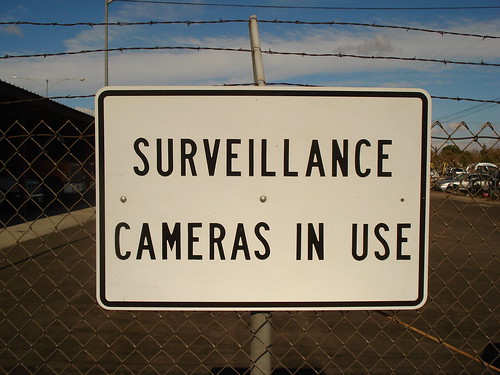INTRODUCTION
In today’s Public Safety, Civil Rights, and Technology (PSCRT) Committee there will be a discussion of the proposed Port Security Surveillance Camera Project. I have a history of working on this issue, dating back to 2008 when the Council voted to authorize a pilot project of 12 cameras to be operated in four City Parks. More on the history can be read below.
I, like many people, learned about the Port Security Surveillance Camera Project from the West Seattle Blog. At a PSCRT committee hearing in May of 2012, SPD got the go ahead to accept funding from the Department of Homeland Security to implement a Port Security Surveillance Camera Project, including the use of cameras on waterways, port facilities, and facing the Puget Sound. Since this time, the ACLU and several citizens have also contacted the Council with concerns about the implications of this program.
A LEGISLATIVE APPROACH
Last Friday, the Mayor promised in the Seattle Times that there would be a public vetting of the 30 cameras before they are turned on. I welcome that step. But, just like in 2008, for me the question is when should a free society allow personal activities that occur in public to come under 24/7 surveillance? We must always strive for a balance that provides for safety without compromising the principles of our democracy. To try and best strike that balance, I am proposing legislation that requires departments seeking to acquire certain surveillance equipment to first obtain City Council approval as well as requiring that they develop protocols to be passed by the Council to guide their proper use, including retention, storage, and access of any data that the cameras capture.
I was not at the May 2012 PSCRT meeting, but I am told that installation of surveillance cameras in recreational and residential zones for general surveillance was not supported by the committee. Further, Councilmember Harrell has stated since then that he believes this kind of use will not be supported in the future either. If the cameras that are part of the Port Security Surveillance Camera Project have the capacity to deliberately or inadvertently capture the activity of individuals on public or private property, under those circumstances, the legislation that I am working on would require that those cameras would first have to be approved by the Council and the Council would also have to approve protocols for their use. If, on the other hand, they are aimed strictly on infrastructure and the immediate perimeter for security purposes, than my legislation would not apply.
HISTORY OF SURVEILLANCE CAMERAS IN SEATTLE
In 2008, I voted against legislation authorizing the installation of twelve surveillance cameras in four city parks because I felt at the time that there was little information available to prove that these cameras reduce crime or lead to more convictions. On the other hand, active parks programming and police presence are proven effective public safety tools. In 2008, when the Council approved these twelve cameras, the $45,000 cost of one of them was equivalent to 774 hours of overtime pay for police.
Even though the Council in 2008 approved installing the cameras, I still worked limit the cameras to a twenty-one month pilot program with tight controls that were legislated by ordinance to help protect citizens’ civil rights. Ordinance 122705 set these protocols for the use of the surveillance cameras in the parks and limited their use to Cal Anderson, Hing Hay, Occidental and Victor Steinbrueck Parks. The bill also mandated an evaluation by the City Auditor to determine, among other things, whether crime had actually been reduced in the parks and required that the City Council consider the Auditors’ report conclusions before authorizing continued operation of the cameras beyond the pilot program.
Later in 2010, the Council voted on Council Bill 116975, ending the pilot program and removing the cameras from Cal Anderson Park, Hing Hay Park, Occidental Park, and Victor Steinbrueck Park and further strengthening the protocols for future surveillance programs that would seek to put cameras in the city parks. These changes resulted from nine recommendations from the City Auditor to improve the City’s ability to evaluate the Surveillance Camera Pilot Program, to increase the effectiveness of the cameras, and to improve departmental compliance with the requirements of Ordinance 122705.
CONCLUSION
In closing, I’m very pleased that it appears that the Council is ready to broaden the scope of the legislation already passed in 2008 and 2010. I hope that they agree to support a bill like the one that I have been working on, so that prior authorization and protocols are required when any city department, not just the Department of Parks and Recreation, seeks to install surveillance cameras.

